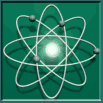ACHIEVEMENTS IN TEACHING
Since it establishment in 1961, 220 students and 32 Candidates of Sciences
graduated from the Department of Nuclear Physics. A postgraduate course in
Nuclear Energy and Environment was completed by 40 graduates. At present,
the branch Nuclear and Subnuclear Physics is attended by about 10
undergraduate
students in each study year and by 18 graduate students. In both,
graduate and undergraduate forms of study, students can specialize in one
of the following fields:
- nuclear and subnuclear physics
- applied physics and environmental physics
- computer physics
IMPORTANT SCIENTIFIC ACHIEVEMENTS
A lot of important results were obtained by employees of the Department of
Nuclear Physics or by the international teams of which they were active
members.
Among them can be listed:
- discovery of three new chemical elements (Z=110,111,112) and large number of
new isotopes
- a triplet of differently shaped spin-zero states in the atomic nucleus 186Pb
- the role, the formation time of hadrons plays in forming the hot matter
in heavy ion collisions, has been clarified
- explanation of the photon formation length effect in the Bose-Einstein
correlations of bremsstrahlung photons
- in a series of accelerator experiments-direct search for magnetic monopole
set up strict limitations on cross section for its production
- development of computer codes for the simulation of cosmogenic nuclides and
gamma ray production and its applications in international space missions
- development of method for absolute calibration of spectrometric channel
with photomultiplier utilizing deconvolution of light diode spectrum
- new detector technologies for high energy experiments were developed and
applied on DELPHI experiment at
- two new nuclear structure methods(QRPA with p-n pairing and Two Vacua RPA)
for study of double beta decay process and DCX reactions have been proposed
- search for heavy neutrino in nuclear decay with no evidence for its
existence in IBEC 55Fe was carried out
- search for rare decays (muon->eee, pion->eee) with ARES spectrometer at
Dubna
- experimental cross sections of reactions 36,38,40Ar(n,alpha) and angular
distributions of their products were obtained
- monitoring of environmental radioactivity in Bratislava and Slovakia
after the Chernobyl accident
- determination of contribution to the total volume activity of 14C
in atmosphere originating from nuclear power plants
- radionuclide dating of underground waters within the program of geothermal
research of Slovakia
- the variations of 222Rn in outdoor atmosphere were confirmed and Garzons
model of daily wave was verified
- the microdosimetry and molecular dynamics simulation of radiation damage
to DNA show the evolution of primary lession in the close proximity







 fmph.uniba.sk
Main page: http://www.dnp.fmph.uniba.sk/index2.php
fmph.uniba.sk
Main page: http://www.dnp.fmph.uniba.sk/index2.php